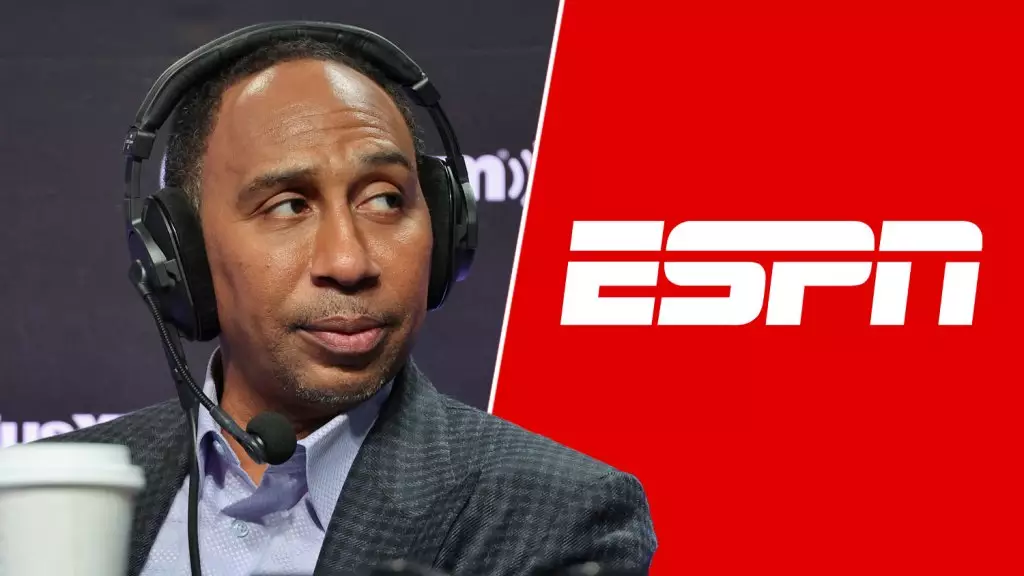The world of sports media is vibrant and ever-evolving, drawing in personalities whose impact extends far beyond the traditional confines of sports commentary. One such figure is Stephen A. Smith, the outspoken ESPN commentator whose contract renewal discussions have recently ignited considerable public interest. As Smith navigates these negotiations, a critical analysis reveals not just the stakes involved but also the implications for both his career and ESPN’s strategic direction.
To understand the significance of Stephen A. Smith’s situation, it’s crucial to address the broader context in which sports media operates today. With the advent of streaming services and the exponential growth of digital platforms, traditional networks like ESPN are wrestling with how to maintain relevance and profitability. This has led to a shift in focus, concentrating effort and financial resources on a select few flagship talents. Consequently, names like Smith are not just fixtures in programming; they are integral to a network’s branding and its attempt to capture the ever-elusive younger demographic.
Smith’s multifaceted role at ESPN exemplifies the modern sports commentator. He does more than just analyze games or host segments; he is a brand unto himself, appearing in various formats and platforms, including podcasts and television series, thereby broadening his influence. His ability to transcend sports commentary and dip into entertainment, such as his role on “General Hospital,” uniquely positions him as an important strategic asset for ESPN in an increasingly competitive landscape.
The latest commentary from Stephen A. Smith about his ongoing contract negotiations suggests that while financial considerations are certainly important, they are not the singular focus of his discussions with ESPN. He has firmly dismissed rumors indicating his agreement might be worth $120 million, suggesting that the figure is exaggerated. Instead, he emphasized the importance of flexibility to pursue diverse opportunities outside of ESPN’s ecosystem. This nuanced approach to contract negotiations illustrates a changing mindset among prominent figures in sports commentary—where financial compensation is critical, but not at the expense of career mobility and creative freedom.
Smith’s insistence that “the money does matter” serves as an acknowledgment of the realities facing all professional broadcasters. However, it also reveals a more sophisticated evaluation of what success entails in the current media landscape. By prioritizing efforts that allow for versatility, Smith’s approach might serve as a blueprint for upcoming talents in understanding that one-dimensional roles can be limiting in an industry ripe with opportunities.
As talks between Smith and ESPN unfold, a strategic alignment appears necessary for both parties. Smith sees potential for longevity at ESPN but hints that flexibility may be a critical factor. In a climate where layoffs have become commonplace and talent is scrutinized rigorously, such discussions are prudent. Both sides have expressed receptiveness, indicating that there is room for negotiation that could lead to a mutually beneficial arrangement.
Furthermore, ESPN must recognize the broader implications of retaining Smith. His popularity and influence not only attract viewers but also drive engagement across various platforms. For the network, losing such a prominent figure could exacerbate existing challenges at a time when it is preparing to launch a stand-alone streaming service. The stakes are high, and a failure to retain Smith could signify a larger issue concerning ESPN’s brand equity and market positioning.
As Stephen A. Smith considers his future and aspirations within the ESPN framework, the outcome of these negotiations may herald a new era for sports commentators. By balancing traditional roles with a desire for multifaceted opportunities, he embodies the evolution of the commentator landscape where versatility and personal brand are increasingly vital. The industry is at a crossroads, and how Smith navigates this critical juncture could set the tone for future discussions and the evolution of sports journalism as a whole.
Stephen A. Smith’s ongoing negotiations with ESPN not only exemplify his personal interests but also reflect the shifting dynamics within the sports media landscape. His journey underscores a critical lesson for emerging talents—beyond financial success lies the importance of creative autonomy and adaptability in a rapidly changing media environment.

